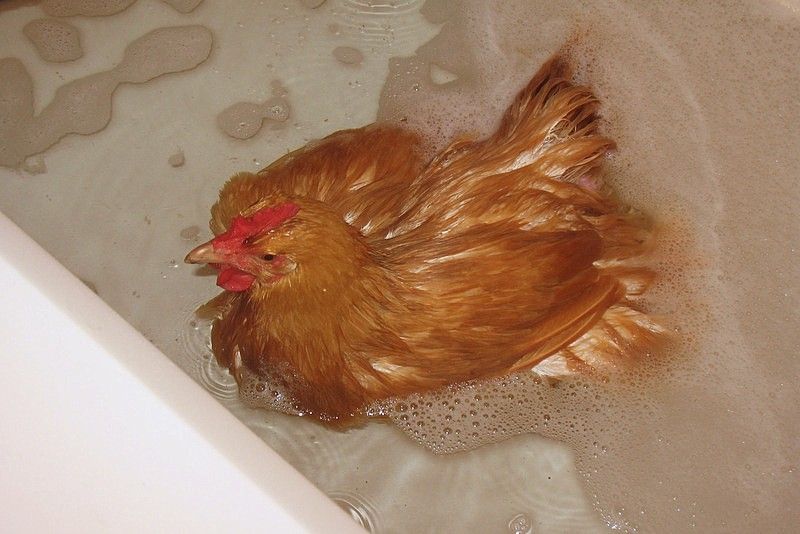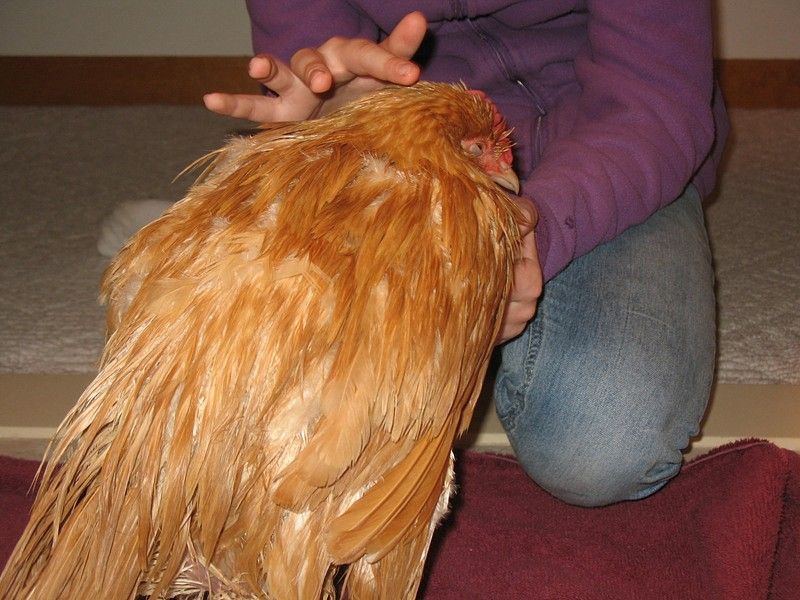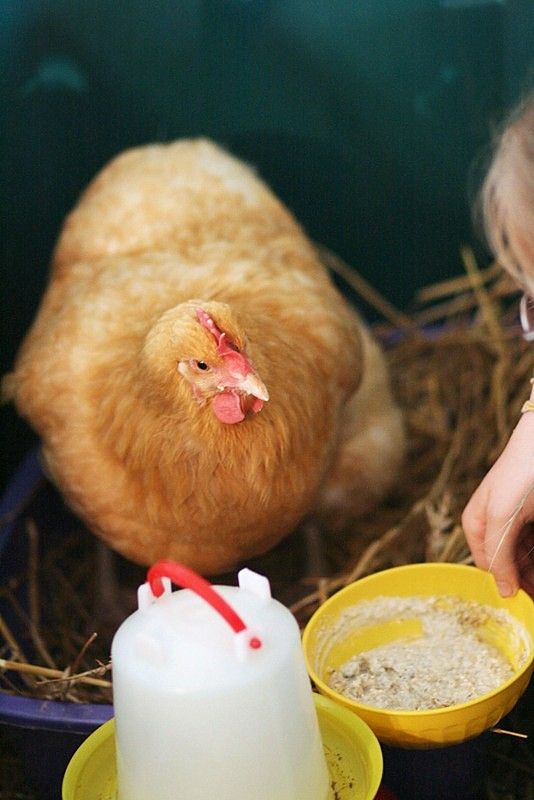My poor sweet Dixie. I feel just awful. Dixie is very sick and I didn't realize it. I'm hoping it's not too late. I brought her in the house on Sunday to give her a bath to see if I could find out what was wrong. Her symptoms:

Blow dried her as she struggled to stay awake during her relaxing spa treatment.


Yesterday, I fed her scrambled eggs made with oatmeal, organic whole milk, and garlic for breakfast. She is eating and drinking. The rest of the day yesterday, I was feeding her a mash consisting of Organic Chicken feed, mixed with organic plain yogurt. This morning I fed her the yogurt mash thinking that the yogurt will help heal her gut. Her water has Duramycin 10 (a broad spectrum antibiotic), I also gave her de-worming drops yesterday thinking that perhaps she may have a horrible case of worms?
Is there anything else that I can do for her? Is there some insight that you may have for me? Any guidance would be so greatly appreciated.
Kelly
- She is very bloated in her abdominal region.
- She had diarrhea (consisting of clear liquid, green and white)
- She waddles like a penguin. I didn't know that it was because of being so bloated. This has been going on for several weeks (the wattling).
- She began to get a droopy tail on Friday.
- Saturday, she was unable to go up the ramp to the coop and had to be helped. Sunday morning she needed help getting down the ramp in the morning.
- Her chest seem emaciated, but she does not seem underweight, in fact is very heavy when I hold her.
- She is not laying eggs, but I'm sure she's not egg bound, because she'd surely be dead by now.
What I've done, and am currently doing:
Sunday I gave her a bath and made the discovery that she was so incredibly bloated. I also let her soak for a very long time in the warm water.

Blow dried her as she struggled to stay awake during her relaxing spa treatment.

Monday morning, I set up a brooder box for her and brought her into the house so I could nurse and monitor her. 
Is there anything else that I can do for her? Is there some insight that you may have for me? Any guidance would be so greatly appreciated.
Kelly
Last edited:

